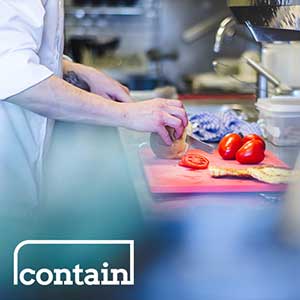August 21, 2024
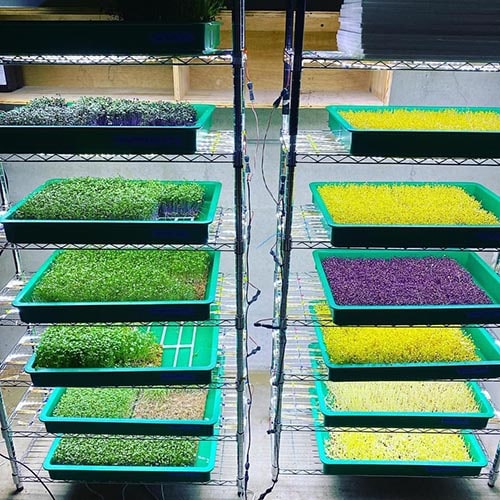
At Contain, we’re often asked for recommendations on setting up a leafy green home grow, even though our primary focus is on working with commercial equipment providers to help their farmer clients find funding for their grows. However, every once in a while, we come across a story that’s too interesting not to share. Alex Kranzberg’s journey from a small apartment grower to a leafy green seller is one such story, illustrating the potential of indoor farming as a rewarding side hustle.
The Seed of an Idea
Alex’s entrepreneurial spirit began in college, where he launched his first business venture. However, it wasn’t until years later that his interest shifted to agriculture. Motivated by the instability of traditional farming due to climate change and a passion for self-sufficiency, Alex began researching indoor farming in 2016. “Agriculture hasn’t seen a major revolution in centuries,” Alex notes, “and I wanted to be part of that change, especially with the rising challenges like droughts and unpredictable weather.”
Setting Up the Indoor Farm
One of the key advantages Alex had in setting up his indoor farm was his handiness. With a knack for DIY projects, he was able to create a custom setup tailored to his specific needs. However, he acknowledges that not everyone possesses this skill set, which can make the process more challenging for those less familiar with tools and electronics. For those who are less handy, it might be worth checking out our Equipped marketplace, where you can pick up pre-owned indoor farm equipment at a discount.
Alex spent nearly a year researching and gathering the necessary equipment, most of which he sourced from Amazon. His setup was a combination of DIY ingenuity and carefully selected components, designed to maximize efficiency in a small space. He found that this leafy green home grow setup was adequate for a small side hustle business, where he primarily sold his microgreens to friends, family, and at local farmers markets.
Alex’s Equipment List
Alex kindly shared the list of equipment he used to create his indoor farm. Some items are no longer available, but we’ve taken a stab at identifying the listings:
- hunhun 40-Pack 3.3ft U Shape Aluminum Channel for LED Strips ($85)
- LEDMO 5630 Flexible LED Strip (no longer available)
- MEAN WELL SE-600-12 AC to DC Power Supply ($232)
- Water Quality Test Meter Pancellent TDS PH ($19)
- AcuRite 01083 Pro Accuracy Indoor Thermometer and Hygrometer ($16)
- Digital Pocket Scales ($20)
- Panacea Products Bulk Coco Fiber Roll ($53)
- BUD Industries NBF-32016 Plastic ABS Electrical Enclosure ($37)
- Prime PS010608 8-Feet 16/3 SJT Power Cord (no longer available)
- Remington Industries 22UL1007STRRED and 22UL1007STRBLACK Wire ($13 per spool)
- Xiofio 5-Tier Plant Stand for Indoor Outdoor ($77)
The Economics of Leafy Green Home Grows and Cottage Food Laws
Alex quickly learned that while indoor farming offers many benefits, it also comes with economic challenges. “Microgreens are nutrient-dense but have a very short shelf life, which limits their market,” Alex explains. This made it clear that while profitable, indoor farming was best suited as a side hustle rather than a full-time job. Alex juggled his day job while dedicating evenings and weekends to his growing operation.
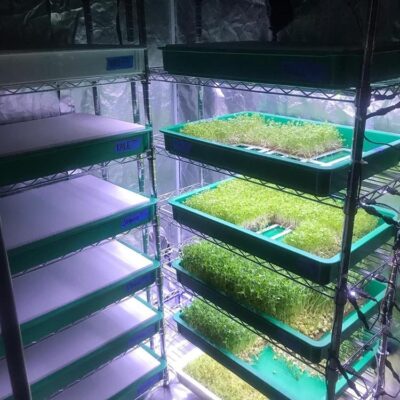
He sold his produce at farmers markets and to friends and family, but he did not sell to local grocery stores. The reason for this was simple: his setup, while effective, did not meet the regulatory standards required for selling on a large scale. Larger commercial operations often need to comply with more stringent food safety regulations, which can be difficult and costly for a small grower to meet.
However, Alex was able to take advantage of cottage food laws, which are offered in many states. These laws allow individuals to produce and sell certain foods from their leafy green home grows with fewer regulatory hurdles. Cottage food laws are particularly beneficial for small setups like Alex’s, as they provide a legal pathway to sell products directly to consumers without needing to meet the extensive requirements that commercial scale farmers face. This can make home growing more accessible and profitable for those looking to start small.
The Growing Popularity of Home Farming
Alex’s story is part of a larger trend. Home gardening and indoor farming have surged in popularity in recent years, driven by a desire for fresh, local food and a greater awareness of sustainability. According to the National Gardening Association, 35% of U.S. households grow their own food, a number that has increased significantly in the last decade.
Indoor farming, in particular, has seen growth due to its ability to bypass some of the limitations of traditional agriculture. With controlled environments, growers like Alex can produce crops year-round, using less water and space than outdoor farming. However, as Alex’s experience shows, the economics can be tricky, especially when operating on a small scale.
Lessons Learned
Reflecting on his journey, Alex offers advice to those interested in home growing. “Start small and for yourself,” he advises. “The initial setup can be expensive, and you need to be sure this is something you’re passionate about before scaling up.” He also stresses the importance of research and planning, particularly when it comes to equipment and setup. Alex’s meticulous approach to building his indoor farm allowed him to avoid common pitfalls, like electrical issues or inefficient setups.
While Alex no longer grows at the scale he once did—life and work commitments have shifted his focus—he remains an advocate for indoor farming. “It’s not just about growing food; it’s about growing a lifestyle that’s sustainable, healthy, and fulfilling,” he says.

Notes:
-images are courtesy of Alex Kranzberg
-this post includes affiliate links
-none of the products listed in this post constitute recommendations as to equipment you should purchase or use for your grow, you should conduct your own research and make the best choices for your situation

Indoor Agriculture Pivots to Home Gardens as Vertical Farming Failures Drive Strategic Reevaluation
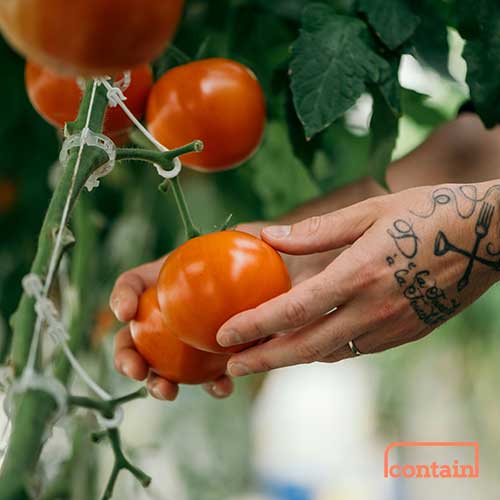
Zordi Series B and May 2025 Indoor Agriculture Developments
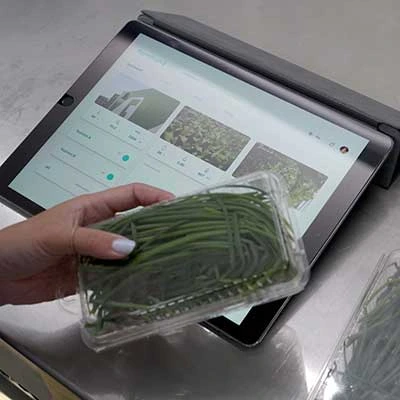
Freight Farms Bankruptcy and iUNU’s $20M Raise Highlight April’s Indoor Ag Contrasts
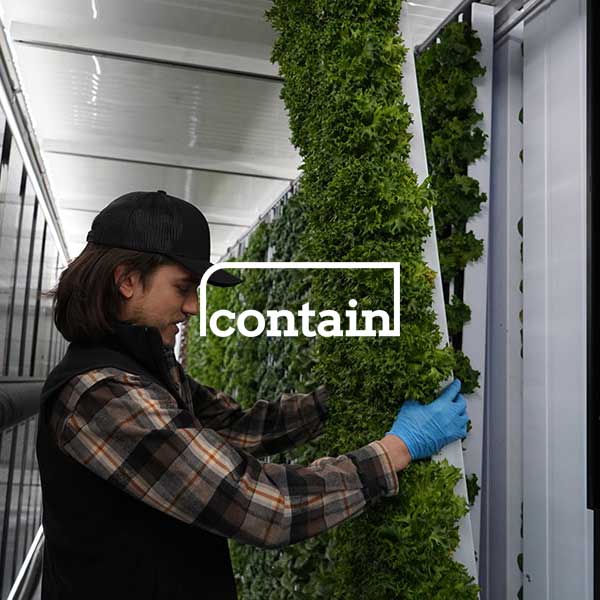
Freight Farms Resources: Indoor Ag Companies Stepping Up to Support Freight Farmers

How to Finance Your Hydroponic Project in 2025: Finding Opportunity in a Shifting Market
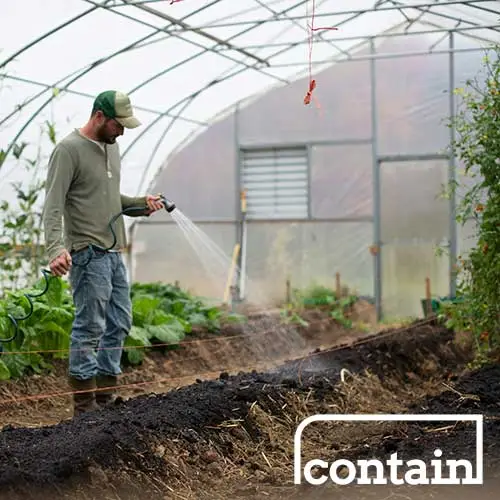
Indoor Ag’s New Reality: Practical Advice from Investment Banker Adam Bergman

Plenty Unlimited bankruptcy dominates March’s indoor ag news, overshadowing new farm plans
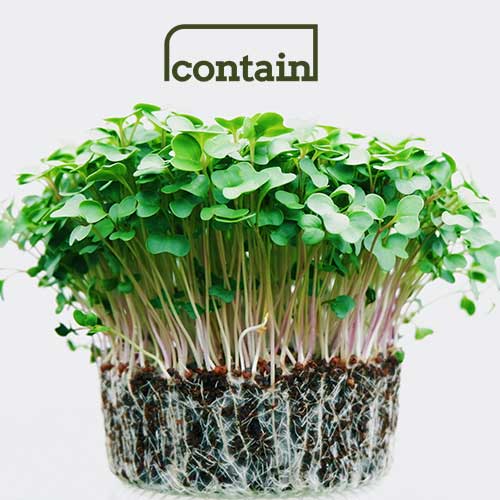
80 Acres Farms secures $115m, Square Roots expands to Japan, and indoor ag sees farm shakeups in February

Robobees take flight, vanilla goes vertical, and a new IPO is on the horizon in indoor agriculture’s January
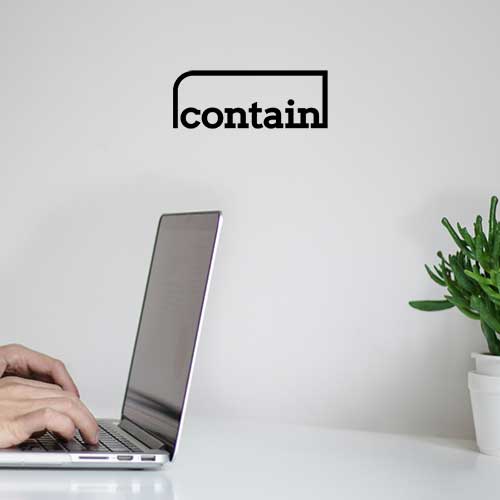
Canadian Agriculture Grants: 7 Funding Opportunities for Indoor Farming in 2025
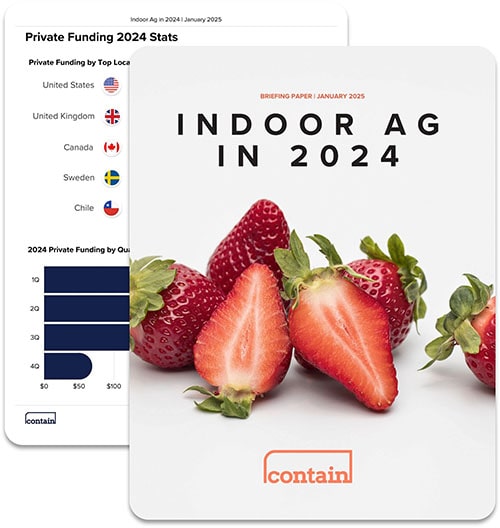
Indoor Ag Outlook: Funding Trends and 2025 Projections
